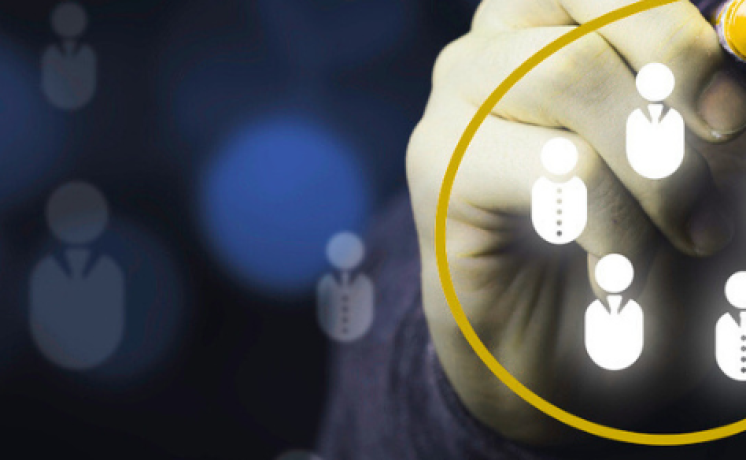USDM hosted a webinar, Ensuring AI Compliance and Maximizing the Value of Your GxP Technologies, with Google and Sorcero to discuss responsible AI in life sciences. The following questions came up during the live event.
Where are healthcare and life sciences customers in their AI journey?
There’s a continuum: some are on the forefront thinking about what they can be doing; some are just dipping their toes into AI and thinking about how to test it and use it; and some are relying on partners to learn what others are doing and how they can incorporate it. There are many questions to contemplate regarding AI initiatives.
What are reasonable expectations for life sciences companies that want to commit to implementing AI or starting a pilot program?
The overarching theme is outcomes—tangible benefits and a clear return on investment (ROI). Management is going to hold you to task, so be sure you have a holistic view of AI in your organization. It involves people, processes, and technology. You need people with the right skillset, processes in place, and the infrastructure and technology, like a quality system for governance.
Your AI initiative must be incremental and scalable, and the outcomes need to be socialized within the company. Keep your eyes on compliance and risk management and build on lessons learned.
Know how to guide people along the continuum of responsible AI. From executive management to the operational floor in every department, train your people on responsibilities and capabilities. Always have humans in the loop.
As life sciences companies test pilot programs, when do they start to see the ROI?
The reality is that about 90% of pilot projects go nowhere. But that’s why we do pilot projects: to determine their feasibility. Tried-and-true methods in an AI pilot program are to find a workflow and data type that will be used by many teams, but get started with one team that wants to be an early adopter. You can tailor it to a specific team and scale up as you get insights to share across the team.
When companies start to see their ROI depends on things like the cadence of a manual process and the depth of data handling. It might take six months to determine the sentiment in the market and know if your pilot project moved the needle.
The ROI will be different across teams, but it’s a benchmark for the kind of success and value the pilot project can deliver.
What kind of technology infrastructure do we need in order to build scalable AI projects?
A cloud-based infrastructure provides the scalability and flexibility needed for AI solutions. For example, AWS, Google Cloud, and Microsoft Azure scale their computing resources to accommodate shifting demands.
Cloud platforms typically include tools and services for data storage, processing, and analytics. With that in mind, USDM’s Digital Cloud & AI System Implementation services offer:
- Cloud platform services: Application modernization and migration, infrastructure services, cloud native development, cloud DevOps and test automation, and qualification and validation.
- Cloud data and AI services: Generative AI (GenAI), data management, data analytics, business intelligence and visualization, data migration, data governance, integration, and data quality.
- Cloud cybersecurity, risk management, and compliance: Identity and access management services, control and compliance, detection and response, infrastructure and application security, and single sign-on (SSO).
How do we choose the right AI technology providers?
Ensure that the technology aligns with your goals, enhances your operations, and complies with industry standards. To guide your selection process, be sure to:
- Clearly define your needs. Identify a specific problem you want to solve with AI. For example, drug discovery, predictive analytics, patient management, or operational efficiency.
- Evaluate the AI technology provider’s expertise. Look for providers that specialize in life sciences, understand the regulatory environment and data privacy concerns, and adhere to responsible AI models.
- Confirm compatibility. Ensure that the AI technology integrates seamlessly with your existing systems and infrastructure and that it will scale to your needs.
- Determine the scale of AI implementation. Start with a pilot project. Its success will help you with departmental integration and company-wide deployment.
- Assess their data handling capabilities. Evaluate how the provider handles data security, storage, processing, and compliance with regulations like the Health Insurance Portability and Accountability Act (HIPAA) and General Data Protection Regulation (GDPR).
- Investigate their training and support programs. Verify that the provider offers adequate training for the AI technology and that their after-sales service is more than adequate.
How do we make AI accessible to everyone in our organization?
Making AI accessible to everyone in an organization requires tools, education, and support. Depending on the type of tools you’re using—including low-code or no-code platforms—training might be accomplished via online courses or you might consider customized training and certification programs. Whatever path you choose, AI skills training promotes a culture of innovation.
Encouraging experimentation, recognizing those who contribute to AI-related projects, and rewarding those who successfully implement AI solutions are all effective ways to make AI accessible and drive its adoption in your organization.
How do we ensure that AI tools and workflows boost employee productivity?
To boost employee productivity, AI tools should be used for repetitive, time-consuming, and error-prone tasks or processes. Employee input helps you understand their pain points and real-world testing ensures that the AI tools meet their needs. Ultimately, AI tools should be interoperable with other software and tools used by employees.
Monitor and measure performance by setting clear metrics and key performance indicators (KPIs) to track the impact of AI tools on productivity. Regularly review performance data and solicit employee feedback to identify areas for improvement.
How do we ensure that our data is protected and secured when we use new AI tools?
Cybersecurity services from USDM help you protect intellectual property, patient data, and other critical information. Solutions include data encryption, access controls, secure data storage, and compliance with data protection regulations like the GDPR and HIPAA. Ultimately, this promotes trust, maintains the reputation of the organization, and mitigates financial and legal risks associated with data breaches or non-compliance.
We also help you assess and manage cybersecurity risks related to third-party vendors and suppliers to mitigate potential threats. We evaluate the security practices of these entities, conduct due diligence to understand their cybersecurity capabilities, and establish contractual obligations that enforce a high level of cybersecurity.
USDM Life Sciences provides the expertise, resources, and advanced technologies to effectively implement AI solutions that drive innovation, improve efficiency, and ensure compliance. Schedule a consultation to learn more about our AI system implementation and cybersecurity services.




